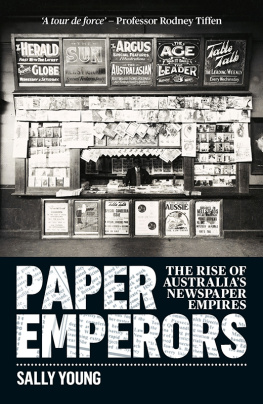Young - Build a pond for food and fun
Here you can read online Young - Build a pond for food and fun full text of the book (entire story) in english for free. Download pdf and epub, get meaning, cover and reviews about this ebook. City: Pownal;Vt, year: 1997;1978, publisher: Storey Publishing, LLC, genre: Children. Description of the work, (preface) as well as reviews are available. Best literature library LitArk.com created for fans of good reading and offers a wide selection of genres:
Romance novel
Science fiction
Adventure
Detective
Science
History
Home and family
Prose
Art
Politics
Computer
Non-fiction
Religion
Business
Children
Humor
Choose a favorite category and find really read worthwhile books. Enjoy immersion in the world of imagination, feel the emotions of the characters or learn something new for yourself, make an fascinating discovery.

Build a pond for food and fun: summary, description and annotation
We offer to read an annotation, description, summary or preface (depends on what the author of the book "Build a pond for food and fun" wrote himself). If you haven't found the necessary information about the book — write in the comments, we will try to find it.
Young: author's other books
Who wrote Build a pond for food and fun? Find out the surname, the name of the author of the book and a list of all author's works by series.
Build a pond for food and fun — read online for free the complete book (whole text) full work
Below is the text of the book, divided by pages. System saving the place of the last page read, allows you to conveniently read the book "Build a pond for food and fun" online for free, without having to search again every time where you left off. Put a bookmark, and you can go to the page where you finished reading at any time.
Font size:
Interval:
Bookmark:
by D.J. Young
The farm or homestead fishpond slowly is gaining recognition for what it actually can be: a multi-valued asset. It finally is proving itself; it is proving that it can provide fish and recreation for the entire family, plus some surplus for friends and neighbors; or some surplus to sell, if it is large enough and properly managed. In addition to its primary purpose of raising fish, it can be a source of water for irrigating the garden, the orchard, watering cattleeven water for firefighting in case of an emergency.
Many times fishponds have been tried and termed "unproductive not worth the effort and expense." The reasons for failure can be traced to poor pond construction, based on bad advice or no advice. Productive fishponds are the result of following good and proper planning. Like constructing a home, there are proven, effective designs. Not every house plan will provide the comforts desired; not every fishpond plan will support fish.
Construction expertise in the field of aquaculture lies with the USDA Soil Conservation Service, the US Fish and Wildlife Service, and the fish and wildlife services of the various States.
Regrettably, in spite of this expertise we produce less than 3 percent of our fish needs through aquaculture, while the world output has more than doubled during the past five years. Some countries produce nearly 40 percent of their total needs. We apparently are not taking advantage of one of our natural resources.
With the available expertise, the United States can do as well as the rest of the world; the farm family can do better. It can produce well over 50 percent of its fish needs. This bulletin is designed to help the farm family or homesteader increase that productivity.
Many farms or homesteads have natural ponds that can be converted into productive fishponds. In this bulletin you will find diagrams to show you how this can be done. Other farms have excellent sites for building man-made fishponds. You also will find here plans and suggestions to help you build it right the first time. Productive fishponds are not accidents; they dont just happen.
A well planned and constructed fishpond will pay for itself in time It will add to the economy by furnishing food for the family, as well as providing recreation. It can serve as a pond for fishing, a swimming pool in summer, or as an ice skating rink in winter in northern regions where water freezes to a sufficient thickness. A fishpond, in addition to being a sound and basic instrument of resource management, is a means of improving property value.
The most important part of any plan for constructing your fishpond is selecting the proper site. This decision will determine the initial cost, maintenance cost, productivity, utility and life of the pond.
First, you need a basin that will hold water. The best water-holding areas are small depressed valleys or wet land areas that are not suited for crop cultivation. Most such areas will be found to have the necessary water-holding qualities.
If your farm or homestead does not have such areas, make certain that the soil in the site you select will hold water without excess seepage. Unless you are an expert in the field, dont trust your own judgment; it may be a waste of time, effort and money. The Soil Conservation Service is at your service in such matters. It will make the necessary tests, borings, etc., then advise you if the soil at the prospective site has the necessary impervious characteristics.
The use you will make of the pond also should determine the location, where there is a choice of locations. If it is to be used mainly for stocking fish, swimming in summer, or ice skating in winter, it is best located near the home. If it can be located near the home, you may wish to install a dry hydrant for use of the water for fire protection or for irrigating the garden during periods of drought.
The available water supply certainly will be a determining factor in your site location. The best and least expensive water source is from a natural watershed, usually found at the head of depressed valleys or wet areas. Such water sources in most cases will preclude locating the pond near the home. On the other hand, if well water is used, the best choice may be near the home because that is the location of most wells.
Both the quantity and quality of the available water are essential elements that must not be overlooked in your search for an ideal site. If the available water supply is from a natural watershed, it should be sufficient to maintain the necessary water level in the pond; if it is not sufficient, the expense of a supplementary water supply will have to be considered. If the watershed supplies too much water, the topography must offer ways to divert the excess water.
Water should not contain contamination, such as runoffs from barn lots, crop fields where insecticides are most likely used. It should not carry silt from surrounding areas. Silt will be less of a problem if the watershed has a good cover of vegetation. If the watershed does not have vegetation, it would be advisable to wait until a good cover can be grown before building the pond. This would only be practical where all of the region or area contributing water is under the control of the prospective pond builder.
Not all farms or homesteads will have ideal fishpond conditions, but lack of the ideal site does not mean that you cannot build a successful pond. Fishponds can be built on more or less flat lands, even when the ideal waterholding qualities of the soil are not present, and an adequate natural watershed not available. This subject will be covered in a later section.
After the pond site has been selected, some cleaning-up of the area will have to be done. The type and extent will vary, depending on whether you are converting an existing pond or small lake into a fishpond, building an excavated pond, or an embankment pond.
The embankment pond will entail the most work. All top soil and vegetation should be scraped off including the area under the planned embankment and the top soil set aside for later use, if it is to be used for the embankment.
All trees, shrubs, and brush should be cut from the area and the stumps removed. If there are old tree stumps, they should be pulled out with the other vegetation and hauled away.
In addition to the pond and embankment areas, a strip about 15 or 20 feet back from the landside toe of the embankment should be cleared of trees. If trees, especially deciduous trees, are left too close to the waters edge, the leaves that will fall in the water and decay will rob the pond of oxygen needed by the fish.
The absence of leaves in your pond, in addition to the smooth bottom resulting from the clearing of tree stumps, will ease seining operations, an important part of good pond management.
Where existing ponds or small lakes are being converted into fishponds, or where an excavated pond is being built, it is obvious that much of this cleaning-up will result from the reworking of the existing pond areas, or in the process of excavating, where an excavated pond is being built. However, the embankment site and the 15- or 20-foot strip on the landside toe of the planned embankment should also be cleared, as in the case of the embankment pond. Any organic matter left in the embankment site will cause leaks later as it begins to decay.
to Build a Fishpond
Many farms will have existing natural ponds or small lakes that can be converted into productive fishponds. Existing ponds or small lakes, in most cases, can be safely assumed to have the necessary water-retaining soil and a sufficient water supply from a natural watershed.
Font size:
Interval:
Bookmark:
Similar books «Build a pond for food and fun»
Look at similar books to Build a pond for food and fun. We have selected literature similar in name and meaning in the hope of providing readers with more options to find new, interesting, not yet read works.
Discussion, reviews of the book Build a pond for food and fun and just readers' own opinions. Leave your comments, write what you think about the work, its meaning or the main characters. Specify what exactly you liked and what you didn't like, and why you think so.






